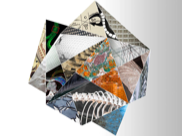XR4ALL is an initiative by the European Commission to strengthen the European XR industry.
After 140 applications, 18 projects have been selected for
Phase 1 of the 2nd Cut-off date of the XR4ALL Open Call. In this phase, projects need to expand upon and validate their concept from a business and a technical perspective during two months.
Based on an evaluation at the end of the first phase, only the best-rated projects will be admitted to Phase 2 and therefore be able to develop the proposed solution.
Our project
DICOM_XR (PI: Christoph Rüger) is one of them (and one of three from Germany)!
One of the most common use-cases for XR in medicine is the visualization of medical imaging data like computed tomography (CT) scans. The well-established standard for storing and transferring such data is DICOM (Digital Imaging and Communications in Medicine). It is used in all major hospitals in the European Union – XR applications that involve medical images need to be built upon this standard. Existing open-source DICOM frameworks offer data interoperability and are compatible with 3D engines, like Unity. However, while DICOM is well-established and very feature rich, it is also a complex standard to work with as a developer. In addition to data interoperability provided by DICOM, most medical XR applications also require: 1) Data transfer from a machine with access to the hospital’s image network to mobile XR devices such as HMDs, 2) performant visualization, particularly for stereographic displays, and 3) view manipulation with 3D input (e.g. hand tracking) instead of mouse input. These requirements are, at best, additional workloads for technically skilled teams and, at worst, insurmountable hurdles for projects lacking programmers.
DICOM_XR is a framework aiming to solve all three of these requirements: data transfer, performant visualization and utilization of three-dimensional input. Building upon an existing open-source DICOM solution, DICOM_XR will offer a ‘plug and play’ solution for XR developers. It will significantly decrease technical hurdles for e.g. medical studies evaluating XR, which are still sorely needed. It can also streamline the development of commercial XR applications: Medical open-source projects such as SlicerIGT have been successfully used as a foundation for certified medical products. In short, DICOM_XR will allow medical XR developers to focus on features that their users want, rather than technical infrastructure.






